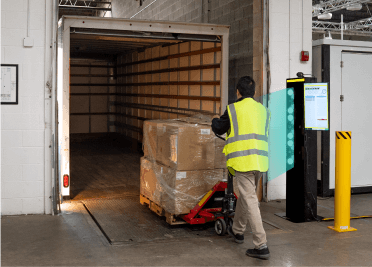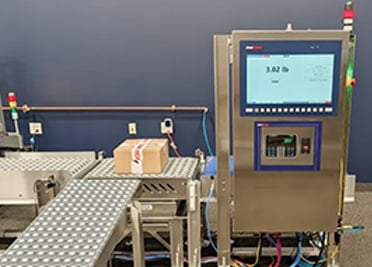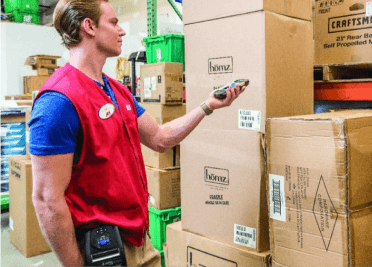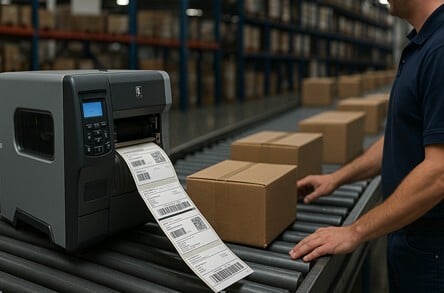“The customer is king,” the old adage goes, and retailers know it. However, the most successful retailers also know that if they want happy customers, they need happy employees.
Yet, the one mistake that many retailers make is assuming that happiness stems solely from compensation-based measures like bonuses or incentive programs. Though money, paid time off and other perks are always appreciated, most retailers are already doing everything they can on the compensation front. It is also known that employee happiness from increased monetary incentives is rather short-lived. It’s time to work differently.
Besides, we’re starting to understand just how much store associates’ job performance directly influences job satisfaction and, therefore, customer satisfaction.
WHAT ASSOCIATES REALLY WANT – AND WHAT THEY WANT TO AVOID AT ALL COSTS
One of the most common worker grievances we hear from our retail customers is widespread workflow inefficiency. Store associates are just taking too long to get all their tasks done these days, many of which are not prioritized or completed correctly. This is hardly surprising considering that many retailers manage labor using report-based analytics solutions that only compile and organize data into a paper report. An associate must then read, interpret and decide how to act on any insights within it. This is a major cause of workplace unhappiness! There’s nothing more disheartening to associates than trying to do a job when they haven’t been given the tools – or any direction on how – to prioritize or complete it.
So, what can be done?
According to the survey, 70% of store associates prefer to receive prescribed tasks to help manage their day rather than reports that they have to constantly stop and decipher. They don’t want to spend their days searching for their tasks in a sea of tiny letters and numbers that seem like a foreign language. Associates would rather have their tasks sent directly to them via technology that automatically interprets the data, determines the best action to take next and tells them exactly what to do – as well as where, when and how to do it.
This data-driven approach to retail workflow management benefits both retail employees and their employers, as augmenting the analytics process with clear-cut actionable intelligence takes any guesswork out of the equation. Store associates (and their supervisors) can be confident that they are always focused on the right (i.e. top priority) tasks at the right time. In turn, store operators can be confident that their labor resources are being fully utilized – and are fully satisfied with the roles they’re being asked to fulfill.
Think about all the amazing things that associates can do when they can spend their whole shift out on the sales floor instead of the back office! Besides keeping shelves stocked, price tags updated and customers moving in and out of the store quickly and safely – all of which contribute to customer happiness – they’ll be able to keep up with every task that pops up on their to-do list without skipping a beat, or making a mistake.
And, all it takes to achieve such a prescriptive workflow is a prescriptive analytics solution. Easy enough.
HOW PRESCRIPTIVE ANALYTICS CAN TRANSFORM STORE ASSOCIATES INTO “HAPPY HEROES”
Prescriptive analytics, if you’re not already familiar, is a robust analytics solution for retail and consumer packaged goods (CPG). It leverages artificial intelligence (AI) and machine learning to analyze data and tell your people:
- What is happening
- Why it happened
- How much it is costing you
- What to do about it
- Who should do it
Prescriptive analytics makes for a better work environment in many ways, but one of the best revolves around its ease of use. Retail associates often cringe at the thought of another tech solution, worrying that it will be even more complicated than the last one (or last two? Last twenty?).
Prescriptive analytics helps sidestep that anxiety by automating the analysis, interpretation, task delegation and follow-up processes. It creates a much more streamlined workflow by sending the right information to the right people at the right time so that they have no doubt that they’re doing the right thing to make store operations run more smoothly – and make both their bosses and customers happy. Even unpleasant or mundane tasks become more efficient and precise with prescriptive analytics, which can go a long way in boosting associate performance ratings and job satisfaction.
For example, consider the shelf-stocking process.
In these times, out of stocks can be damaging to a retailer’s brand. That’s why retailers traditionally send their associates on routine patrols of the aisles to check for shelf gaps. Hardly an exciting task. But when you consider that those patrols may only take place every hour, it becomes clear why associates may dread “making the rounds.”
Inventory is flying off the shelves these days as both in-person and online customers “shop” the same stores. Quite a few in-store customers could have encountered out of stocks since the last check an hour earlier and left disappointed – or worse, complained to an associate. That is like a double gut-punch to your associates. They’re doing what they think they’re supposed to be doing – the best they can – but it just doesn’t seem to be enough to make anyone happy. Frustrated customers never make for a good work experience, nor does your associates feeling like they disappointed customers.
Prescriptive analytics changes that by automating the shelf-stocking process. It compares real-time product movements to your on-hand quantity and alerts your people when the product is about to run out on the shelf, giving them more time to restock before the shelf gap even appears. No angry customers, and no feelings of guilt that customers are upset because of something they did – or didn’t do.
THE TAKEAWAY
At a time when customers are more likely than ever to switch loyalties for the smallest mistakes, offering a truly standout customer experience is key to success.
When employees don’t understand the technology they are provided, or lack the tools to properly perform their jobs, frustration, disillusionment and burnout can result – all leading to high attrition. By incorporating simple yet powerful, effective technology like prescriptive analytics, their work experiences become easier and more enjoyable. This benefits employers in the form of optimized labor and fewer missed sales and customers in the form of better service and greater product availability. Everyone wins.
To learn more, contact our AbeTech Solution Experts today!










